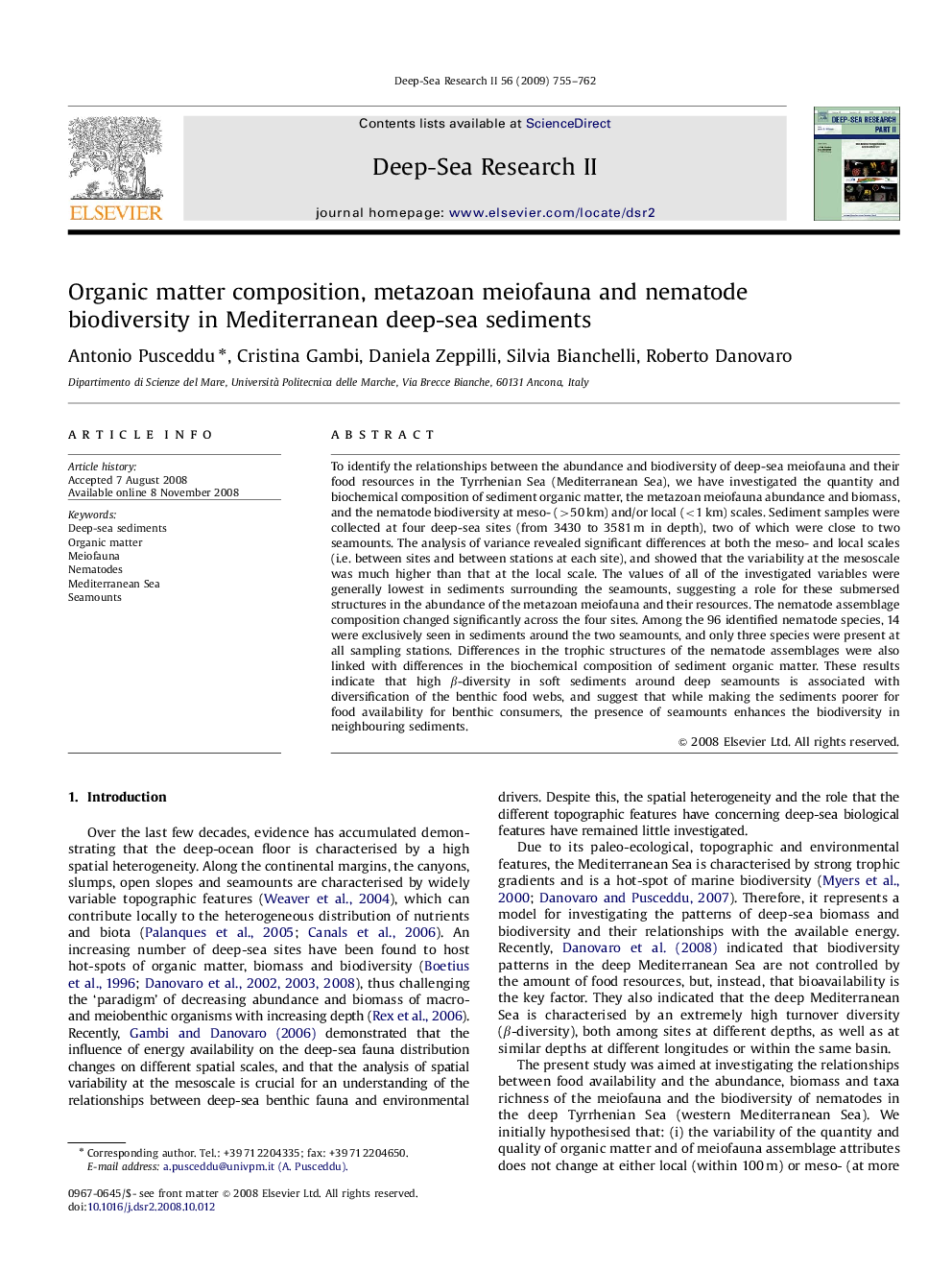| Article ID | Journal | Published Year | Pages | File Type |
|---|---|---|---|---|
| 4537724 | Deep Sea Research Part II: Topical Studies in Oceanography | 2009 | 8 Pages |
To identify the relationships between the abundance and biodiversity of deep-sea meiofauna and their food resources in the Tyrrhenian Sea (Mediterranean Sea), we have investigated the quantity and biochemical composition of sediment organic matter, the metazoan meiofauna abundance and biomass, and the nematode biodiversity at meso- (>50 km) and/or local (<1 km) scales. Sediment samples were collected at four deep-sea sites (from 3430 to 3581 m in depth), two of which were close to two seamounts. The analysis of variance revealed significant differences at both the meso- and local scales (i.e. between sites and between stations at each site), and showed that the variability at the mesoscale was much higher than that at the local scale. The values of all of the investigated variables were generally lowest in sediments surrounding the seamounts, suggesting a role for these submersed structures in the abundance of the metazoan meiofauna and their resources. The nematode assemblage composition changed significantly across the four sites. Among the 96 identified nematode species, 14 were exclusively seen in sediments around the two seamounts, and only three species were present at all sampling stations. Differences in the trophic structures of the nematode assemblages were also linked with differences in the biochemical composition of sediment organic matter. These results indicate that high β-diversity in soft sediments around deep seamounts is associated with diversification of the benthic food webs, and suggest that while making the sediments poorer for food availability for benthic consumers, the presence of seamounts enhances the biodiversity in neighbouring sediments.
